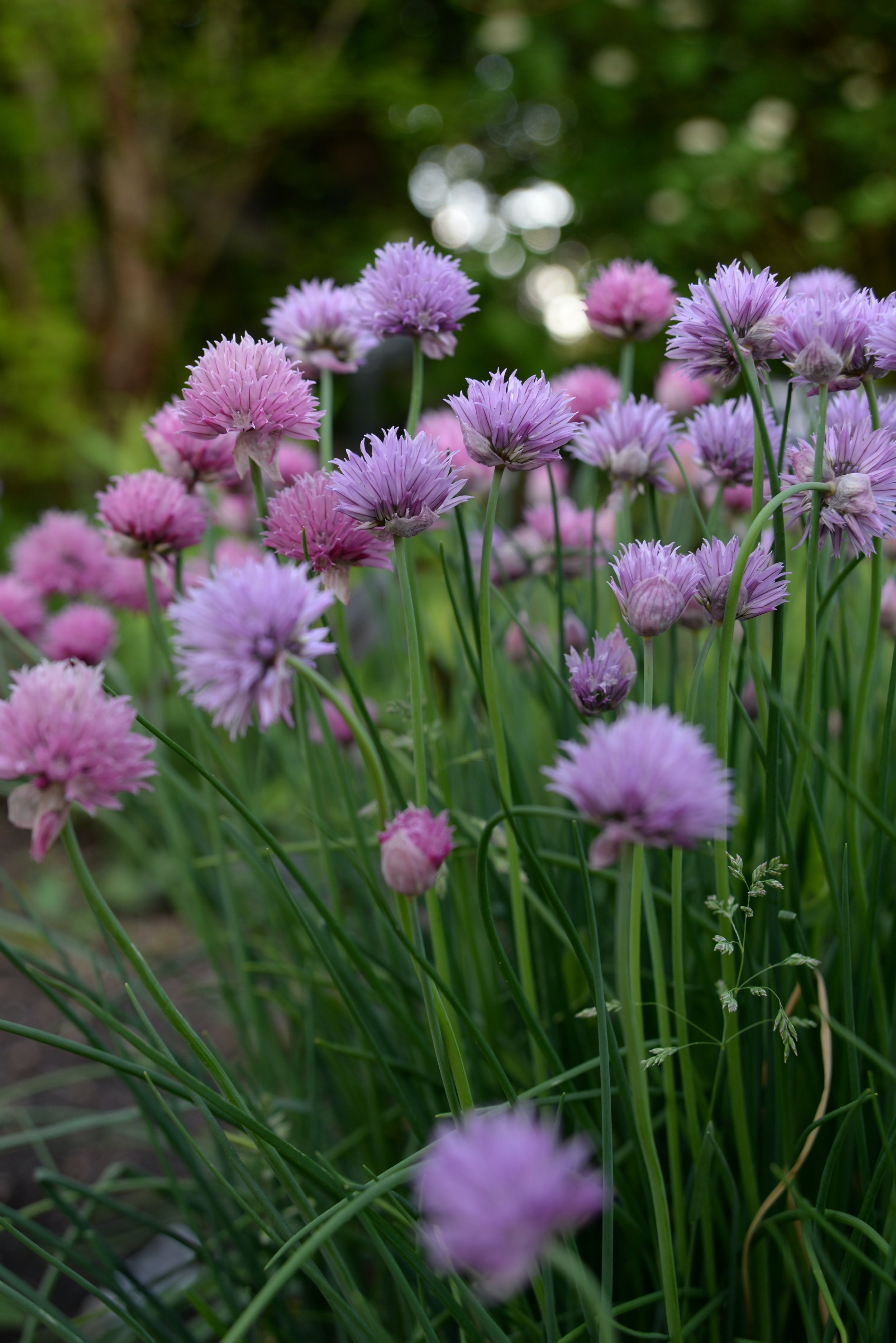
Chives
Chives are a perennial herb that are part of the Allium family, which also includes onions, garlic, and leeks. They are known for their delicate onion flavor and are a popular herb in many cuisines around the world.
The history of chives can be traced back to ancient China and Europe, where they were used for both culinary and medicinal purposes. They were considered to have healing properties and were used to treat a variety of ailments such as digestive issues and respiratory problems. The ancient Chinese and Egyptians used chives to treat a wide range of health problems, including colds, flu, and even cancer. The ancient Greeks used chives to treat respiratory problems such as asthma and bronchitis.
Chives were brought to North America by European settlers and quickly became a popular herb in American cuisine. They were used to add flavor to a variety of dishes, such as soups, stews, and salads. Today, chives are used in many different cuisines, including French, Italian, and Scandinavian. The French use chives to flavor omelets, butter, and sauces. The Scandinavian use chives to add flavor to a variety of dishes, such as fish, potato, and meat dishes.
Chives have a delicate onion flavor, and they are often used to add a subtle onion flavor to dishes without the strong, pungent taste of onions. They are commonly used as a garnish for soups, salads, and sandwiches, and they can also be used to flavor butters, dips, and dressings. Chives are also a popular addition to omelets, scrambled eggs, and quiches. They can also be used in baked goods, such as bread and crackers, for a subtle onion flavor.
In addition to their culinary uses, chives have a long history of use in traditional medicine. They are believed to have anti-inflammatory, antimicrobial, and antioxidant properties. Chives have been found to have a high amount of Vitamin K, Vitamin C, and Vitamin A. These vitamins are essential for maintaining a healthy immune system, strong bones, and good eyesight. They are also a good source of fiber and minerals such as calcium, potassium, and magnesium.
Chives are easy to grow, and they are often used in gardens as an attractive ornamental plant. They can be grown in a variety of soils and climates, and they are a popular herb for container gardens. They can be grown indoors or outdoors, and they can be harvested throughout the growing season.
Here are a few dishes that go well with chives:
Eggs dishes: Chives are a popular addition to omelets, scrambled eggs, and quiches. They can also be added to frittatas, deviled eggs, and breakfast burritos.
Soups and stews: Chives can be used to add a subtle onion flavor to soups and stews. They are particularly good in cream-based soups such as potato and leek soup.
Salads: Chives can be used to add a subtle onion flavor to salads, particularly potato and pasta salads.
Sandwiches and Burgers: Chives can be used to add a subtle onion flavor to sandwiches and burgers, particularly in the form of a chive butter.
Baked goods: Chives can be used to add a subtle onion flavor to baked goods, such as bread and crackers.
Seafood dishes: Chives can be used to add a subtle onion flavor to seafood dishes such as crab cakes, fish cakes, and smoked salmon.
Dairy products: Chives can be used to add a subtle onion flavor to dairy products such as cheese, cream cheese, and sour cream.
Dressings and dips: Chives can be used to add a subtle onion flavor to dressings and dips, such as ranch, and French onion dips.
It's important to note that chives have a delicate onion flavor, so they can be paired with a wide range of ingredients, depending on the desired flavor profile. They are also a beautiful garnish, and they can be used to add a pop of color and flavor to a variety of dishes.
